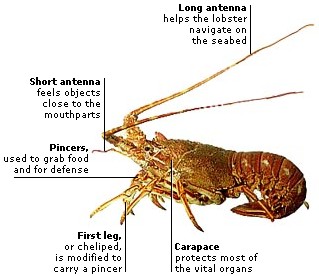DK Nature: Arthropods
Centipedes, millipedes, insects, crustaceans, and arachnids, including spiders, all belong to a super-group of invertebrates called arthropods. Arthropods are more numerous and varied than any other animal group.
All arthropods have bodies divided into segments and covered with a hard EXOSKELETON. This tough casing is made of a protein called chitin, which is also found in human fingernails. The armor is flexible at joints on the legs, which makes arthropods nimble.
Centipedes are active hunters, while most millipedes eat plant matter. Also, centipedes have two legs per body segment. Millipedes have four. Centipedes and millipedes are collectively known as myriapods.
The word centipede means “100 legs,” but some centipedes have fewer than 100 legs, and others have more. Similarly, the word millipede means “1,000 legs,” but in fact no millipede has more than 750 legs.
Arthropods make up the largest phylum (group) in the animal kingdom. There are more than 900,000 named species divided into 13 classes:
| Crustaceans |
| Insects |
| Arachnids |
| Centipedes |
| Millipedes |
| Sea spiders |
| Pauropods |
| Symphylans |
| Springtails |
| Proturans |
| Two-pronged bristletails |
| Three-pronged bristletails |
| King crabs |
An arthropod’s exoskeleton is a protective case and an anchor point for muscles. As well as being tough, it is waterproof, helping these creatures to survive in even the harshest habitats.

The lobster’s hard exoskeleton supports and protects its body. Even delicate parts, such as the legs and antennae, are completely encased. The North Atlantic lobster is the world’s heaviest arthropod, weighing up to 44 lb (20 kg).
In order to grow, arthropods have to molt (shed their exoskeletons) every so often. They then expand their bodies before their new casing hardens. Arthropods are vulnerable while molting, so they look for a safe place to hide before they begin.
Arthropods occur in virtually every habitat, from the cold ocean depths to the hottest deserts. They can live through extremes that would kill most vertebrates. Scorpions, for example, can survive being frozen solid.
